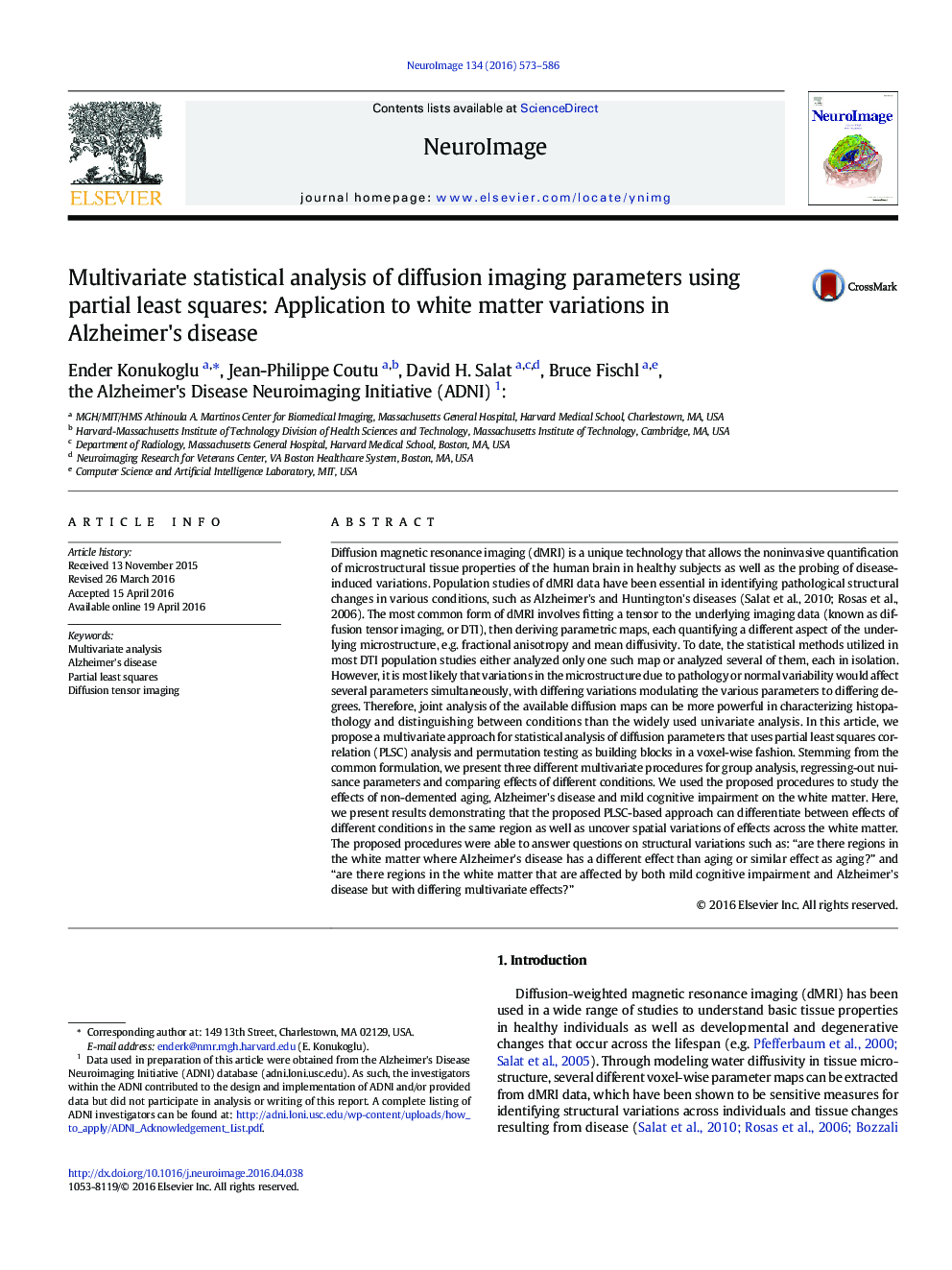| کد مقاله | کد نشریه | سال انتشار | مقاله انگلیسی | نسخه تمام متن |
|---|---|---|---|---|
| 6023366 | 1580874 | 2016 | 14 صفحه PDF | دانلود رایگان |
- Voxel-wise multivariate statistical method is proposed.
- The method allows sophisticated multivariate hypotheses to be tested.
- Results with diffusion imaging are demonstrated.
- Method is applied to study effects of AD, MCI and aging.
Diffusion magnetic resonance imaging (dMRI) is a unique technology that allows the noninvasive quantification of microstructural tissue properties of the human brain in healthy subjects as well as the probing of disease-induced variations. Population studies of dMRI data have been essential in identifying pathological structural changes in various conditions, such as Alzheimer's and Huntington's diseases (Salat et al., 2010; Rosas et al., 2006). The most common form of dMRI involves fitting a tensor to the underlying imaging data (known as diffusion tensor imaging, or DTI), then deriving parametric maps, each quantifying a different aspect of the underlying microstructure, e.g. fractional anisotropy and mean diffusivity. To date, the statistical methods utilized in most DTI population studies either analyzed only one such map or analyzed several of them, each in isolation. However, it is most likely that variations in the microstructure due to pathology or normal variability would affect several parameters simultaneously, with differing variations modulating the various parameters to differing degrees. Therefore, joint analysis of the available diffusion maps can be more powerful in characterizing histopathology and distinguishing between conditions than the widely used univariate analysis. In this article, we propose a multivariate approach for statistical analysis of diffusion parameters that uses partial least squares correlation (PLSC) analysis and permutation testing as building blocks in a voxel-wise fashion. Stemming from the common formulation, we present three different multivariate procedures for group analysis, regressing-out nuisance parameters and comparing effects of different conditions. We used the proposed procedures to study the effects of non-demented aging, Alzheimer's disease and mild cognitive impairment on the white matter. Here, we present results demonstrating that the proposed PLSC-based approach can differentiate between effects of different conditions in the same region as well as uncover spatial variations of effects across the white matter. The proposed procedures were able to answer questions on structural variations such as: “are there regions in the white matter where Alzheimer's disease has a different effect than aging or similar effect as aging?” and “are there regions in the white matter that are affected by both mild cognitive impairment and Alzheimer's disease but with differing multivariate effects?”
Journal: NeuroImage - Volume 134, 1 July 2016, Pages 573-586
